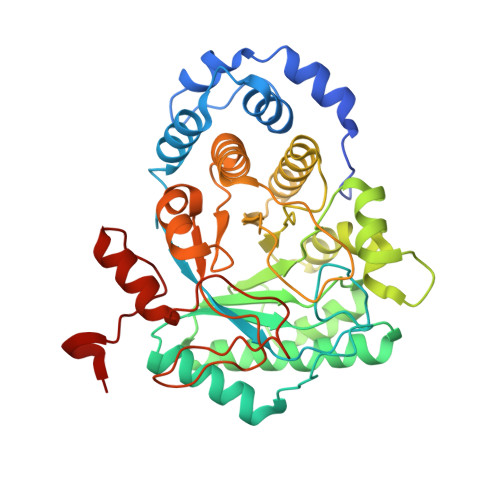Radical S-Adenosyl-l-methionine Tryptophan Lyase (NosL): How the Protein Controls the Carboxyl Radical •CO2-Migration.
Amara, P., Mouesca, J.M., Bella, M., Martin, L., Saragaglia, C., Gambarelli, S., Nicolet, Y.(2018) J Am Chem Soc 140: 16661-16668
- PubMed: 30418774
- DOI: https://doi.org/10.1021/jacs.8b09142
- Primary Citation of Related Structures:
6HTK, 6HTM, 6HTO - PubMed Abstract:
The radical S-adenosyl-l-methionine tryptophan lyase uses radical-based chemistry to convert l-tryptophan into 3-methyl-2-indolic acid, a fragment in the biosynthesis of the thiopeptide antibiotic nosiheptide. This complex reaction involves several successive steps corresponding to (i) the activation by a specific hydrogen-atom abstraction, (ii) an unprecedented •CO 2 - radical migration, (iii) a cyanide fragment release, and (iv) the termination of the radical-based reaction. In vitro study of this reaction is made more difficult because the enzyme produces a significant amount of a shunt product instead of the natural product. Here, using a combination of X-ray crystallography, electron paramagnetic resonance spectroscopy, and quantum and hybrid quantum mechanical/molecular mechanical calculations, we have deciphered the fine mechanism of the key •CO 2 - radical migration, highlighting how the preorganized active site of the protein tightly controls this reaction.
- Univ. Grenoble Alpes, CEA, CNRS, IBS , Metalloproteins Unit , F-38000 Grenoble , France.
Organizational Affiliation:

























